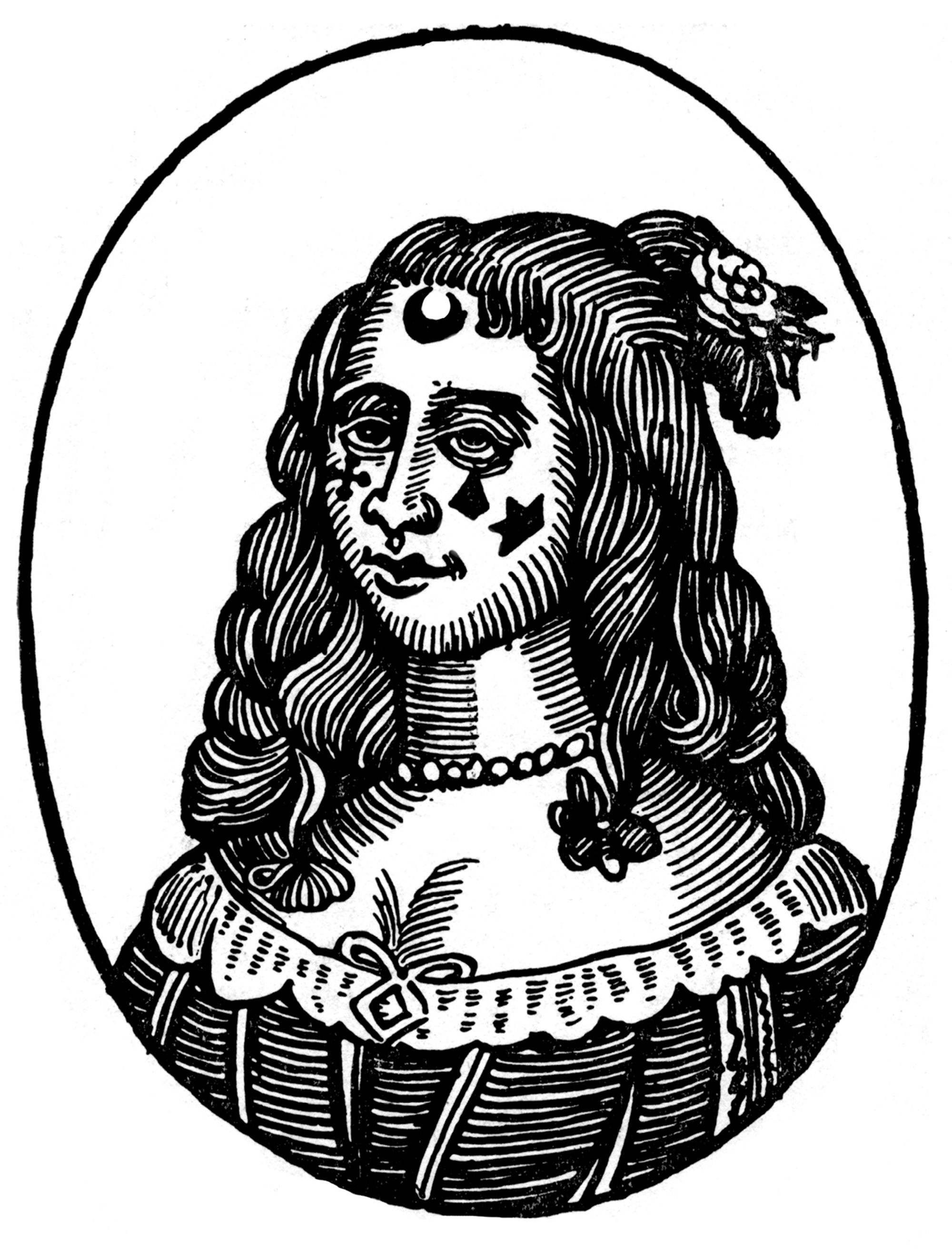Inventory / On The Dot
The patchwork beauty of mouches
Sasha Archibald
“Inventory” is a column that examines or presents a list, catalogue, or register.
Nothing goes down so far as makeup, nothing extends as far as the skin, ornament has the dimensions of the world.[1]
—Michel Serres
In discussions of beauty and style, there is widespread faith in the power of a well-placed mole. A dull foil to the classic foci of the face—the eyes and lips—the mole plays the role of dowdy sister, providing just enough visual static to set off its siblings’ virtues. It is an aberration, but one so slight that, rather than mar, it accentuates. The desirability of the mole is a quiet admission from within the conventions of mainstream beauty that standards of feminine attractiveness are more prescriptive than they need to be, that a touch of idiosyncrasy can enhance rather than detract from a woman’s allure. “There is no excellent beauty,” wrote Francis Bacon, “that hath not some strangeness in the proportion.”[2] Nonetheless, conventional beauty denies the charm of crooked teeth, the resplendence of extra flesh, the androgynous whisper of a moustache. Magazine-cover beauty, vanilla beauty, is a stingy and stifling affair, with scarce a nod to Bacon’s “strangeness.” The mole is the exception: a bit of difference meted out in the tolerable proportion of a tiny dot.

A mole with perfect symmetry, color, and placement is known as a beauty mark. These sorts of moles are more often artificial than natural, and typically drawn, painted, or even tattooed on the skin. Their popularity dramatically increased following developments in the manufacture of eyebrow pencils in the 1920s. Eyebrow pencils had been available for some time, but in the 1920s they acquired a slickness and ease of application made possible by the recent invention of hydrogenated cottonseed oil, patented in 1910 by Procter and Gamble as a food product and ingeniously adapted by Max Factor for various cosmetics. Designed for thickening the brow line or drawing brows where they’d been plucked, the new oil-based eyebrow pencils could also be twirled against the skin to make a faux mole. As worn by many iconic faces of the twentieth century, the drawn-on mole offered a dab of eccentricity to women whose beauty was otherwise wholly normal.
The appeal of a calculated imperfection, however, reaches back much further in time than the 1920s eyebrow pencil, for long before the drawn-on beauty mark was the pasted-on beauty mark. The earliest mention of patching—the practice of attaching a bit of material to the skin to enhance one’s beauty—dates to the early seventeenth century when a male character in a play praises the patch on the temple of his sweetheart as “the very rheum of beauty,” and resolves to adopt a patch himself.[3] Indeed, many men patched, though the fad was usually ridiculed as a feminine affectation. John Bulwer, for instance, in a 1653 tirade against “ridiculous beauty,” described the practice thus: “Our ladies here have lately entertained a vaine Custome of spotting their Faces, out of an affectation of a Mole, to set off their beauty, such as Venus had, and it is well if one black patch will serve to make their Faces remarkable; for some fill their Visages full of them, varied into all manner of shapes and figures.”[4]